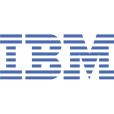 IBM Introduces Windows Compute Cluster Server 2003 for IBM Clusters; Microsoft Deploys IBM System Cluster 1350 for AIDS Research
IBM Introduces Windows Compute Cluster Server 2003 for IBM Clusters; Microsoft Deploys IBM System Cluster 1350 for AIDS ResearchIBM (NYSE: IBM) announced today the availability of Windows Compute Cluster Server 2003 for the IBM System Cluster 1350, to help enable more mid-market and enterprise clients -- including those in life sciences, computer-aided engineering (CAE) and financial services -- to take advantage of high-performance cluster computing. IBM also announced today expanded server, storage and networking options for the cluster solution, to help provide unprecedented levels of speed, choice and flexibility for high performance computing environments.
"IBM has successfully enabled clients to leverage clusters for high-end supercomputing work for over six years," said Wendy McGee, director, IBM Cluster Solutions. "Today by combining leading IBM systems and storage along with the familiar computing interface from Microsoft and new networking offerings from Cisco, IBM has extended high performance computing capabilities to a broader client base."
Microsoft Research is using the IBM System Cluster 1350 to aid in HIV vaccine research. To run simulations of how the HIV virus mutates in response to attacks by the immune system, Microsoft researchers required a system that could manage massive amounts of computation with a technology interface that was easy to use. Using Windows Compute Cluster Server 2003 (CCS) on the IBM cluster has enabled researchers to achieve at least 100 CPU years of results in less than two years, and run simulations 50 percent faster than before.
"Windows Compute Cluster Server 2003 running on the IBM System Cluster 1350 has allowed us to dramatically increase the speed at which we process calculations critical to HIV vaccine research," said David Heckerman, lead researcher of Microsoft Research's Machine Learning and Applied Statistics Group. "We have been able to provide relevant solutions for our client base and leverage the same leading technology solutions for our own efforts to advance AIDS Research."
High performance computing clusters can range from as few as two to thousands of servers woven together to deliver high-speed performance demanded by a broad range of applications. IBM hardware offerings in this space include the IBM System Cluster 1350, an integrated, factory built and tested cluster with networking from leading vendors, as well as System x, System p and BladeCenter servers and IBM System Storage. For customers interested in running Microsoft Windows CCS along with IBM's latest cluster technology, the IBM benchmarking center at the IBM Customer Center in Montpellier, France just added a new program on customer benchmarking around Microsoft-based clusters.
Product Details and Availability
Today IBM updated the System Cluster 1350 to include IBM multi-core processor-based BladeCenter and System x servers, IBM System Storage and networking technologies from Cisco, SMC and Voltaire. The new systems include Quad-Core Intel Xeon processor technology to enhance high performance computing with more capability. The clustered system is also designed to leverage Novell SUSE Linux Enterprise Server (SLES), and now supports the SLES10 operating system.
Products available in the new IBM System Cluster 1350 portfolio today include:
IBM BladeCenter and System x servers featuring multi-core and dual-core processors from AMD and Intel, including: BladeCenter HS21-XM, HS21, LS21, LS41; and System x3550, x3650, x3455, x3655, x3755
New storage options, including: IBM System Storage DS3400 SAS/SATA Fiber Channel Host Interface, DS3200 SAS Host Interface, EXP 3000 (SAS/SATA)
New networking options, including a range of both Ethernet and InfiniBand switches from Cisco, SMC and Voltaire.
IBM System Cluster 1350 pricing will vary depending upon specific configuration.
For more information about IBM, go to: www.ibm.com










